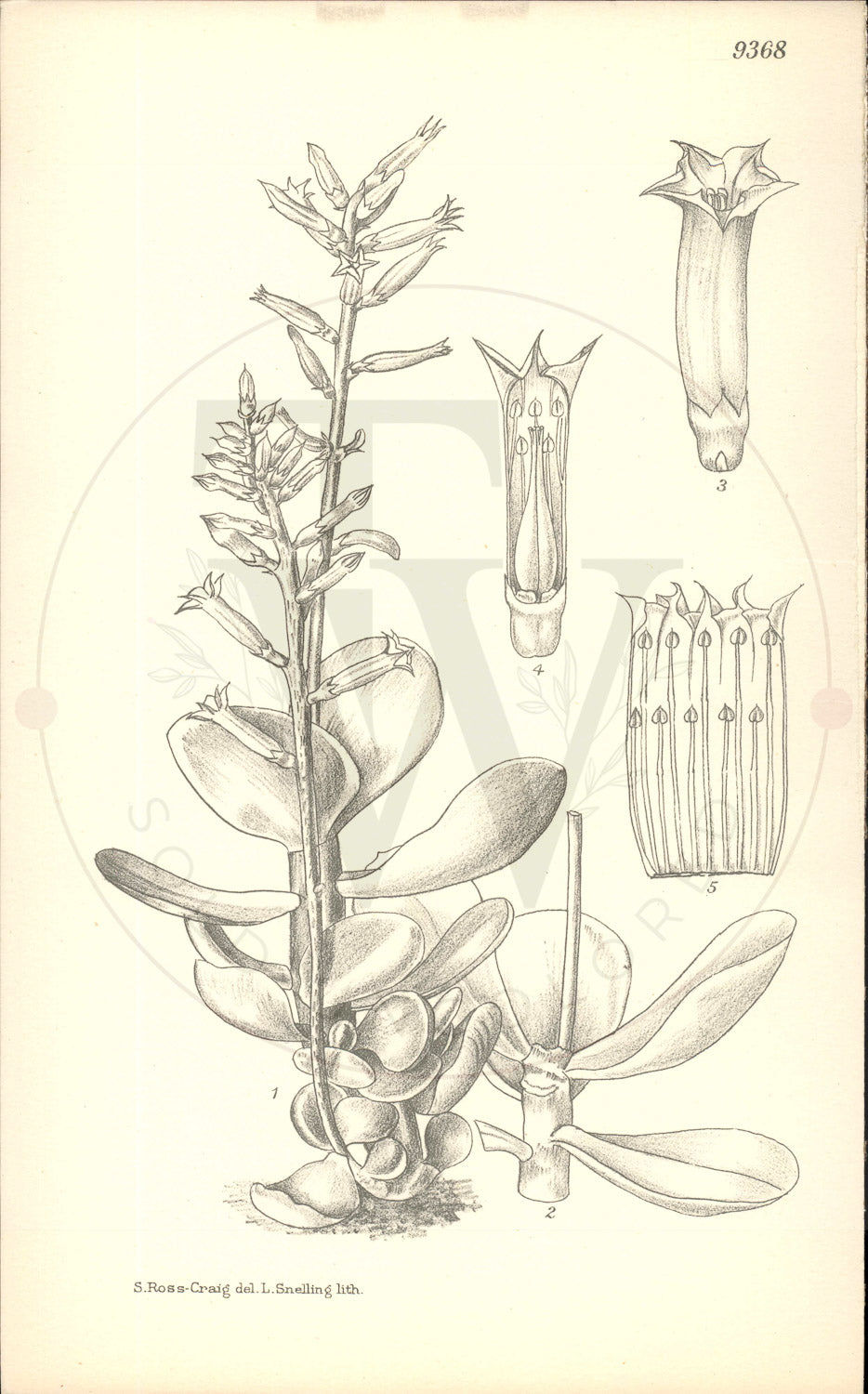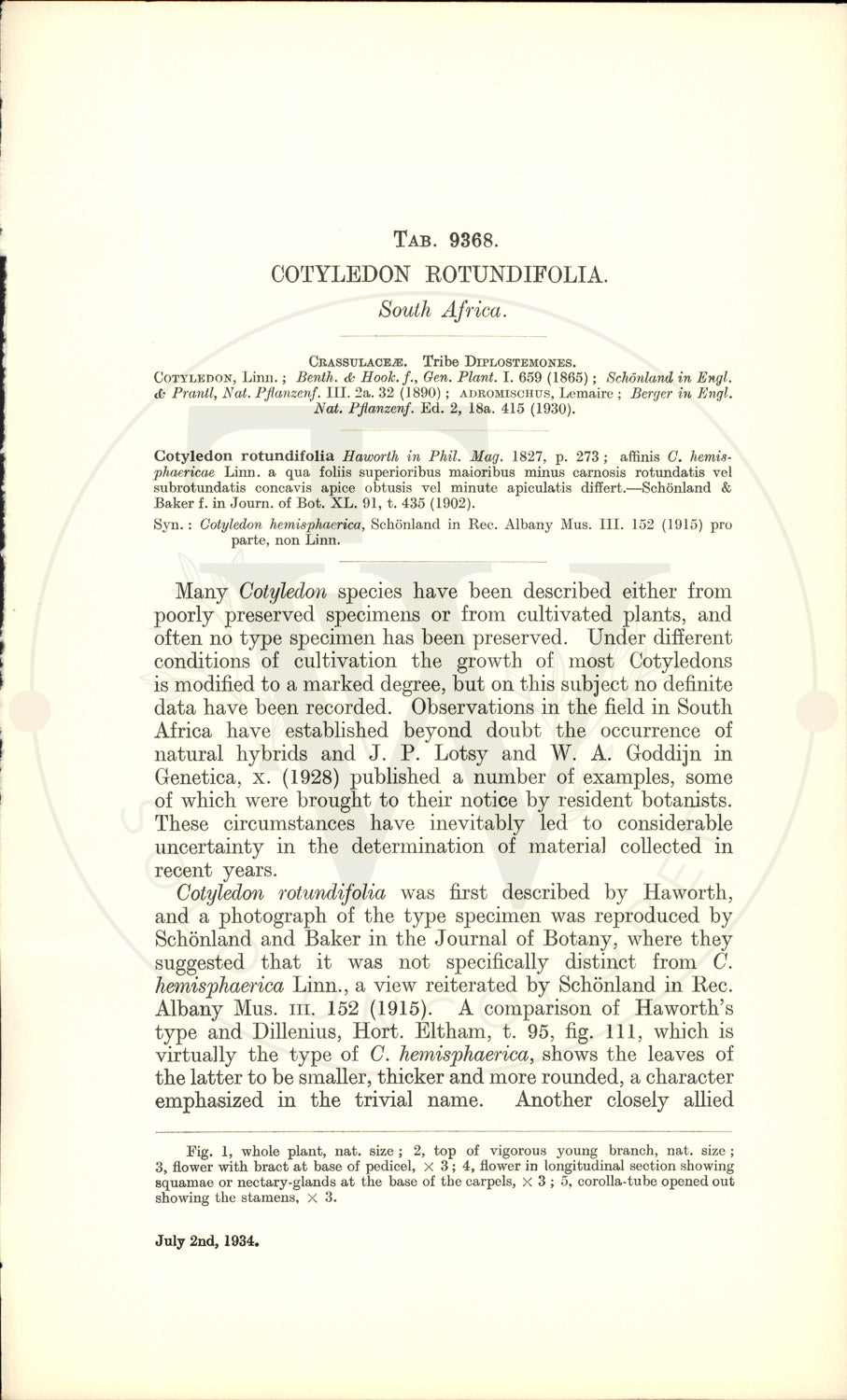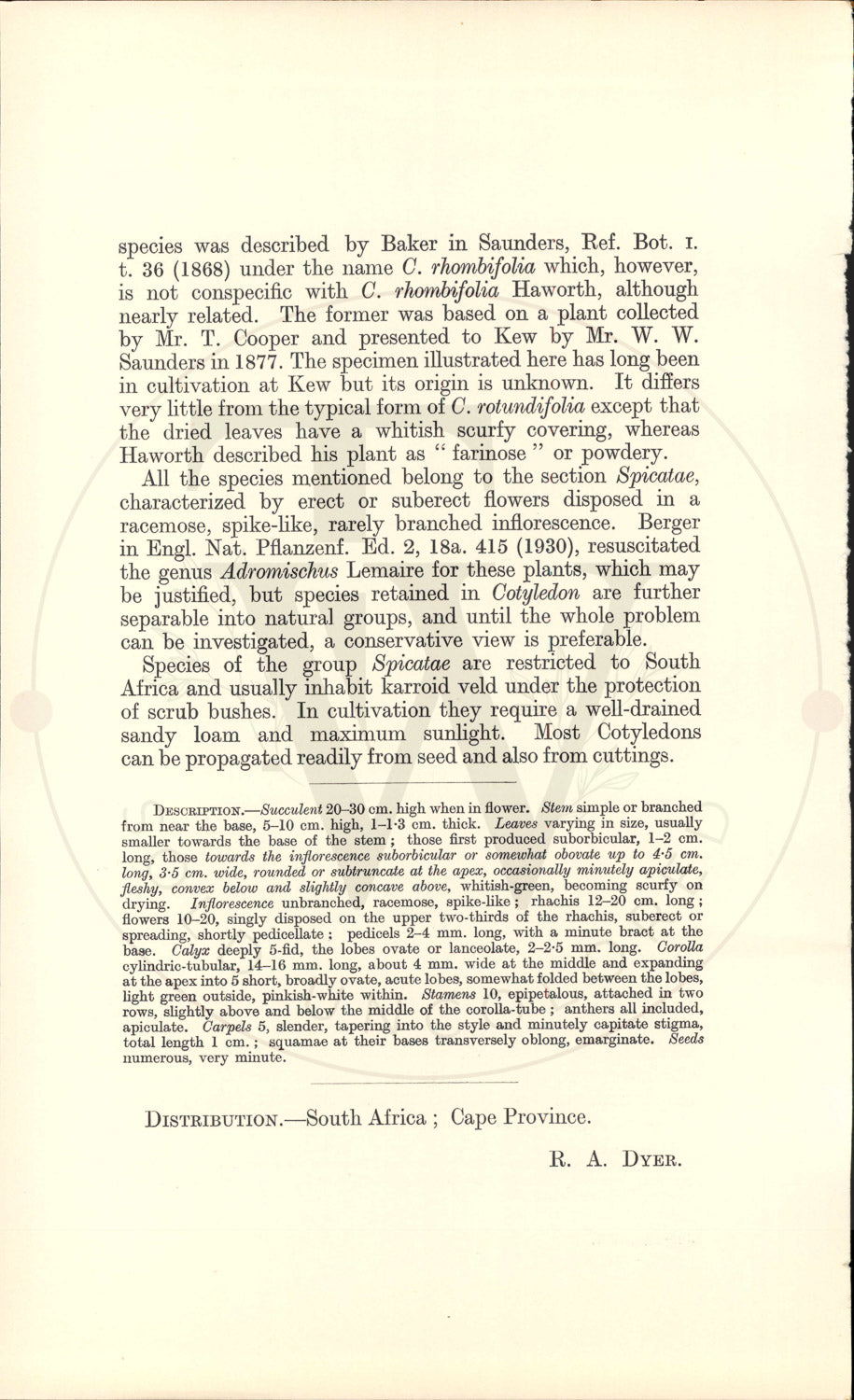Curtis Botanical Magazine
Plate 9368 - Cotyledon rotundifolia
Plate 9368 - Cotyledon rotundifolia
Couldn't load pickup availability
Curtis's Botanical Magazine - Plate 9368
Cotyledon rotundifolia
Family: CRASSULACEAE • Tribe: DIPLOSTEMONES • Native Region: South Africa • Publication Date: July 2nd, 1934
Distribution: South America ; Andes of Colombia, Ecuador, Peru and Bolivia. • Tab Author: F. BALLARD.
Botanical Description
Many Cotyledon species have been described either from poorly preserved specimens or from cultivated plants, and often no type specimen has been preserved. Under different conditions of cultivation the growth of most Cotyledons is modified to a marked degree, but on this subject no definite data have been recorded. Observations in the field in South Africa have established beyond doubt the occurrence of natural hybrids and J. P. Lotsy and W. A. Goddijn in Genetica, x. (1928) published a number of examples, some of which were brought to their notice by resident botanists. These circumstances have inevitably led to considerable uncertainty in the determination of material collected in recent years. Cotyledon rotundifolia was first described by Haworth, and a photograph of the type specimen was reproduced by Sch?nland and Baker in the Journal of Botany, where they suggested that it was not specifically distinct from ?. hemisphaerica Linn., a view reiterated by Sch?nland in Rec. Albany Mus. III. 152 (1915). A comparison of Haworth's type and Dillenius, Hort. Eltham, t. 95, fig. 111, which is virtually the type of C. hemisphaerica, shows the leaves of the latter to be smaller, thicker and more rounded, a character emphasized in the trivial name. Another closely allied.
Synonyms
Syn. Cotyledon hemisphaerica, Sch?nland in Rec. Albany Mus. III. 152 (1915) pro parte, non Linn. Many Cotyledon species have been described either from
About This Print
Original black and white uncolored botanical print from Curtis's Botanical Magazine (established 1787). This 9000s series print is from unissued publisher stock, never hand-colored, representing the authentic plate as it appeared in the magazine. Edited by Sir Arthur William Hill for The Royal Horticultural Society, London.
Share







